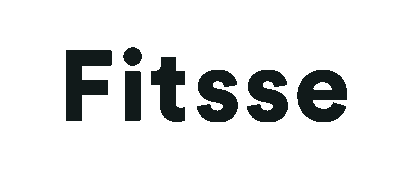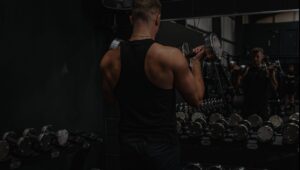The human shoulder is one of the most complex and versatile joints in the body, allowing a wide range of motion and enabling various activities, from lifting and throwing to pushing and pulling. Due to its intricate structure, shoulder training requires a comprehensive understanding of anatomy, biomechanics, and exercise physiology to optimize performance and prevent injury. This article delves into the science behind effective shoulder workouts, exploring the anatomy of the shoulder, the principles of muscle growth, and the best exercises for strength and stability.
Anatomy of the Shoulder
The shoulder, or glenohumeral joint, is a ball-and-socket joint formed by the articulation of the humerus (upper arm bone) with the glenoid fossa of the scapula (shoulder blade). This joint is supported and stabilized by a complex network of muscles, tendons, ligaments, and other structures. Key components of the shoulder include:
- Bones:
- Humerus: The long bone of the upper arm.
- Scapula: The shoulder blade, which provides attachment points for several muscles.
- Clavicle: The collarbone, which connects the scapula to the sternum (breastbone).
- Muscles:
- Deltoids: The primary muscle group of the shoulder, consisting of three heads (anterior, lateral, and posterior).
- Rotator Cuff: A group of four muscles (supraspinatus, infraspinatus, teres minor, and subscapularis) that stabilize the shoulder joint.
- Trapezius: A large muscle extending from the neck to the mid-back, involved in shoulder movement and stability.
- Rhomboids, Levator Scapulae, and Serratus Anterior: Muscles that support scapular movement and stability.
- Tendons and Ligaments:
- Rotator Cuff Tendons: Attach the rotator cuff muscles to the humerus.
- Glenoid Labrum: A fibrocartilaginous rim that deepens the glenoid cavity, providing stability.
- Capsular Ligaments: Surround the shoulder joint, adding stability.
- Bursae: Fluid-filled sacs that reduce friction between moving structures, such as muscles and tendons.
Biomechanics of Shoulder Movement
The shoulder joint is capable of a wide range of movements, including flexion, extension, abduction, adduction, internal rotation, and external rotation. Each movement is facilitated by specific muscles:
- Flexion: Primarily performed by the anterior deltoid, pectoralis major, and coracobrachialis.
- Extension: Primarily performed by the posterior deltoid, latissimus dorsi, and teres major.
- Abduction: Primarily performed by the lateral deltoid and supraspinatus.
- Adduction: Primarily performed by the pectoralis major, latissimus dorsi, and teres major.
- Internal Rotation: Primarily performed by the subscapularis, pectoralis major, latissimus dorsi, and teres major.
- External Rotation: Primarily performed by the infraspinatus and teres minor.
Principles of Muscle Growth
To effectively train the shoulder muscles, it’s essential to understand the principles of muscle hypertrophy (growth). These principles include mechanical tension, metabolic stress, and muscle damage:
- Mechanical Tension: The force generated by muscle contraction and the stretching of muscle fibers under load. Progressive overload, or gradually increasing the weight lifted, is crucial for maximizing mechanical tension.
- Metabolic Stress: The accumulation of metabolic byproducts (such as lactate) during exercise, which can stimulate muscle growth through various cellular pathways.
- Muscle Damage: Microtears in muscle fibers resulting from intense exercise. While some muscle damage is necessary for growth, excessive damage can hinder recovery and performance.
Designing an Effective Shoulder Workout
An effective shoulder workout should target all heads of the deltoid, the rotator cuff muscles, and the supporting musculature. It should also incorporate exercises that promote strength, hypertrophy, and stability. Here are some key exercises for each muscle group:
Deltoids
- Anterior Deltoid:
- Overhead Press: A compound movement that targets the anterior deltoid, along with the triceps and upper chest.
- Front Raise: An isolation exercise that emphasizes the anterior deltoid.
- Lateral Deltoid:
- Lateral Raise: An isolation exercise that targets the lateral deltoid.
- Upright Row: A compound movement that engages the lateral deltoid and the upper trapezius.
- Posterior Deltoid:
- Reverse Fly: An isolation exercise that targets the posterior deltoid.
- Face Pull: A compound movement that engages the posterior deltoid, rhomboids, and rotator cuff muscles.
Rotator Cuff
- External Rotation:
- Cable or Band External Rotations: Isolation exercises that target the infraspinatus and teres minor.
- Face Pulls with External Rotation: A compound movement that targets the rotator cuff and upper back.
- Internal Rotation:
- Cable or Band Internal Rotations: Isolation exercises that target the subscapularis.
Supporting Musculature
- Upper Trapezius:
- Shrugs: An isolation exercise that targets the upper trapezius.
- High Pulls: A compound movement that engages the upper trapezius and deltoids.
- Rhomboids and Middle Trapezius:
- Rows (e.g., bent-over row, seated row): Compound movements that target the rhomboids and middle trapezius.
- Serratus Anterior:
- Push-ups with Serratus Activation: Push-ups performed with a protraction of the scapula at the top position.
- Serratus Punches: Isolation exercises that target the serratus anterior.
Programming Considerations
When designing a shoulder workout program, it’s essential to consider factors such as exercise selection, volume, intensity, frequency, and recovery:
- Exercise Selection: Choose exercises that target all heads of the deltoid, the rotator cuff, and supporting muscles. Incorporate a mix of compound and isolation movements.
- Volume: Total volume (sets x reps x weight) should be sufficient to stimulate muscle growth without causing excessive fatigue or injury. A typical volume might include 3-4 sets per exercise, with 8-12 repetitions per set for hypertrophy.
- Intensity: Intensity should be high enough to challenge the muscles but not so high that it leads to poor form or injury. Working at 60-85% of one-rep max (1RM) is generally effective for hypertrophy.
- Frequency: Training shoulders 2-3 times per week can provide adequate stimulus for growth while allowing for recovery. Ensure that there is at least one rest day between shoulder workouts.
- Recovery: Adequate recovery is crucial for muscle growth and injury prevention. This includes proper nutrition, hydration, sleep, and rest days.
Preventing Shoulder Injuries
Due to the complexity and range of motion of the shoulder joint, it is particularly prone to injuries, such as impingement, rotator cuff tears, and tendinitis. To minimize the risk of injury, consider the following strategies:
- Warm-Up: Perform a thorough warm-up that includes dynamic stretches and mobility exercises to prepare the shoulder joint for exercise.
- Technique: Use proper form and avoid excessive weights that can compromise technique. Focus on controlled, deliberate movements.
- Balanced Training: Ensure that your shoulder workout includes exercises for all heads of the deltoid, the rotator cuff, and the supporting musculature to prevent muscle imbalances.
- Flexibility and Mobility: Incorporate stretching and mobility exercises to maintain shoulder flexibility and range of motion.
- Gradual Progression: Increase weights and intensity gradually to allow the shoulder muscles and connective tissues to adapt.
- Listen to Your Body: Pay attention to any signs of pain or discomfort and adjust your workout accordingly. Rest and seek medical advice if necessary.
Conclusion
Understanding the science behind shoulder workouts is essential for building strength, enhancing performance, and preventing injury. By targeting the various muscles of the shoulder with appropriate exercises and adhering to the principles of muscle growth and recovery, you can develop well-rounded, robust shoulders. Whether you’re an athlete, bodybuilder, or fitness enthusiast, incorporating these scientific principles into your shoulder training routine will help you achieve your fitness goals effectively and safely.
Recent advancements in shoulder rehabilitation emphasize the importance of incorporating neuromuscular training to enhance proprioception and joint stability. Techniques such as proprioceptive neuromuscular facilitation (PNF) and dynamic stabilization exercises are gaining popularity for their effectiveness in improving shoulder function and reducing injury risk.
Emerging research suggests that incorporating blood flow restriction (BFR) training can be beneficial for shoulder hypertrophy and strength gains, especially in individuals recovering from injuries. BFR allows for effective muscle growth with lower loads, reducing stress on the shoulder joint.
With the increasing use of wearable technology, athletes and fitness enthusiasts can now monitor shoulder movement patterns and muscle activation in real-time, allowing for more personalized and precise training adjustments to optimize performance and prevent injuries.








The article provides a thorough understanding of shoulder anatomy, biomechanics, and effective training principles. It’s great to see a focus on injury prevention and balanced training, which are crucial for long-term shoulder health and performance.